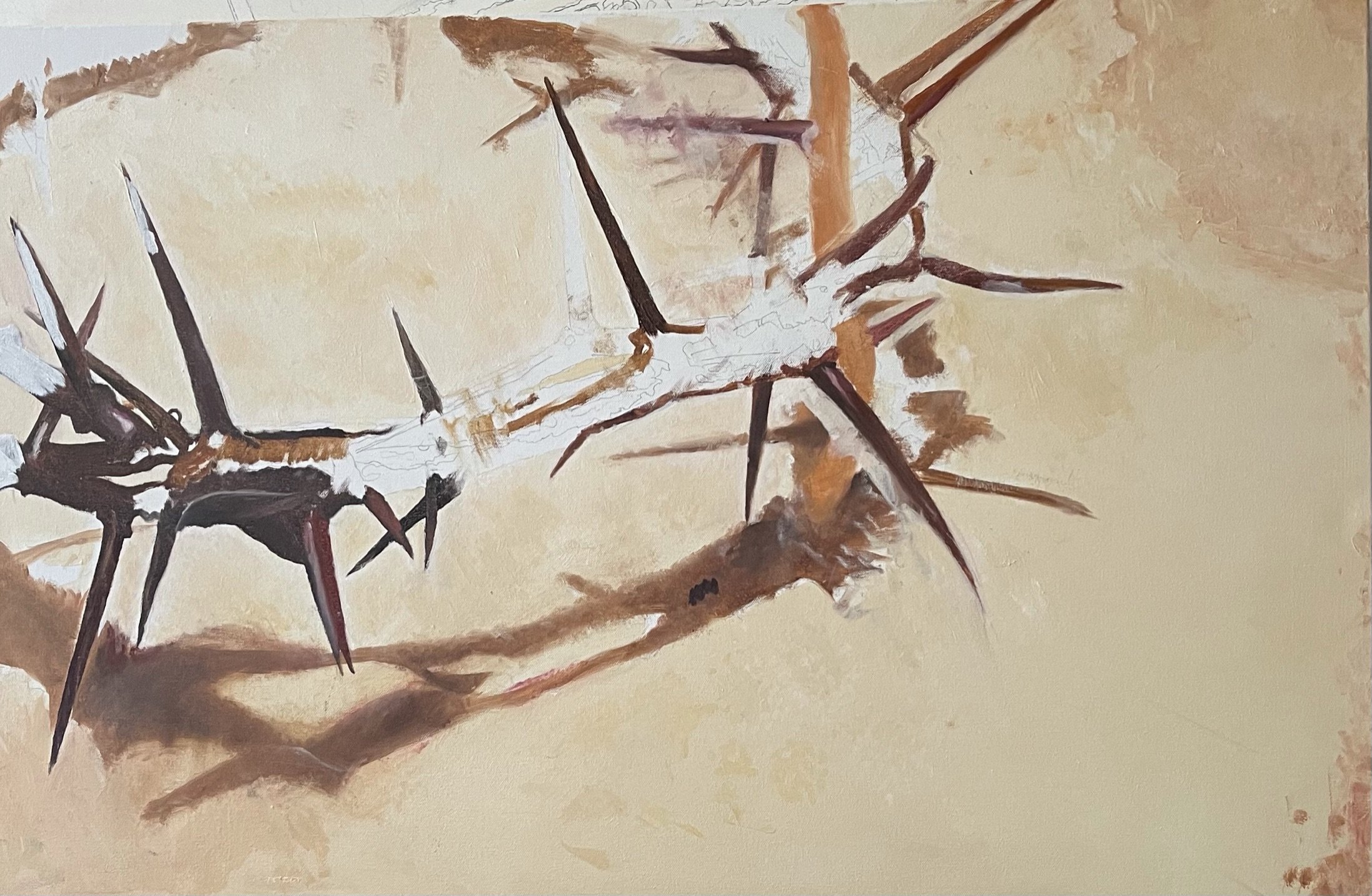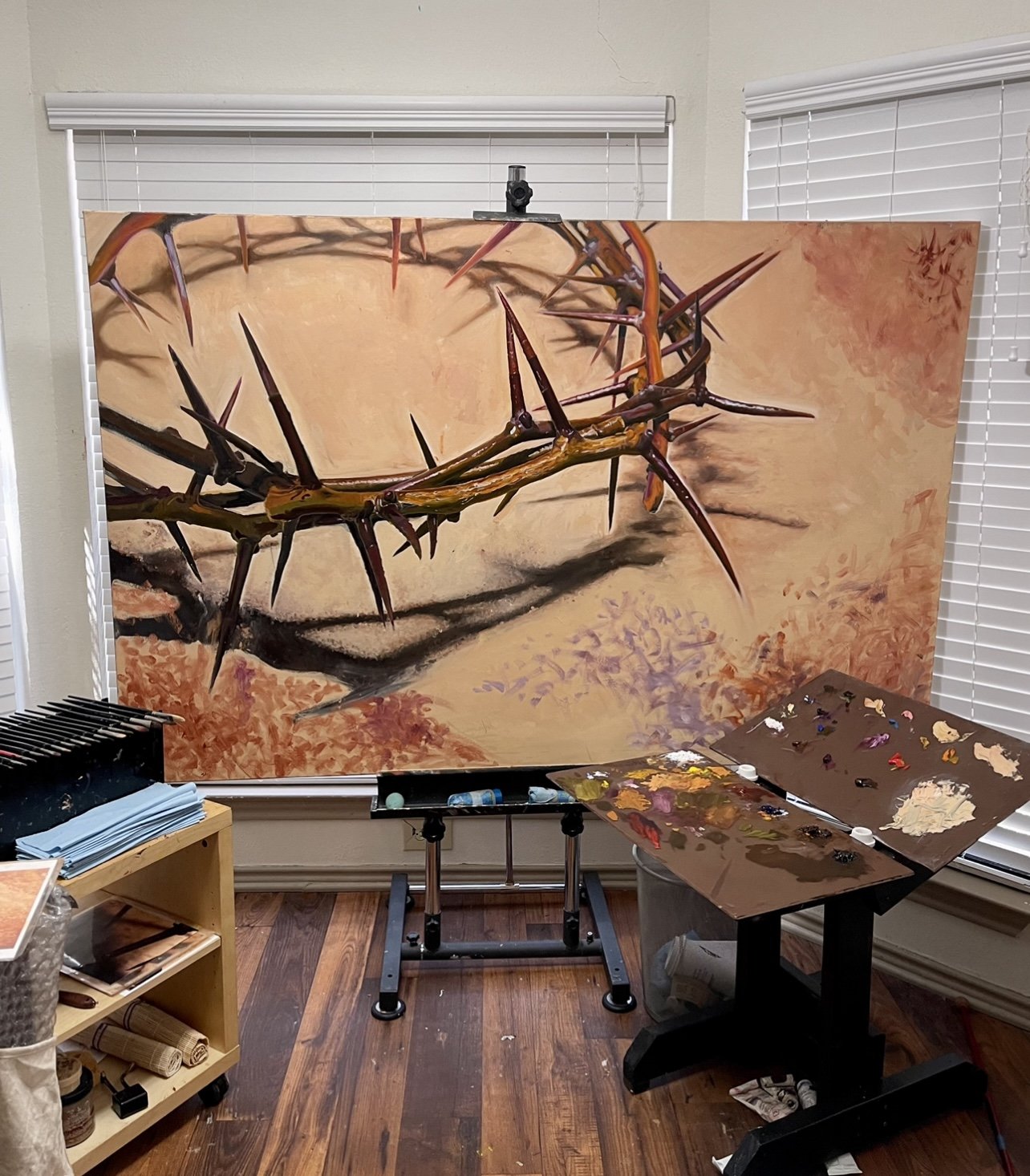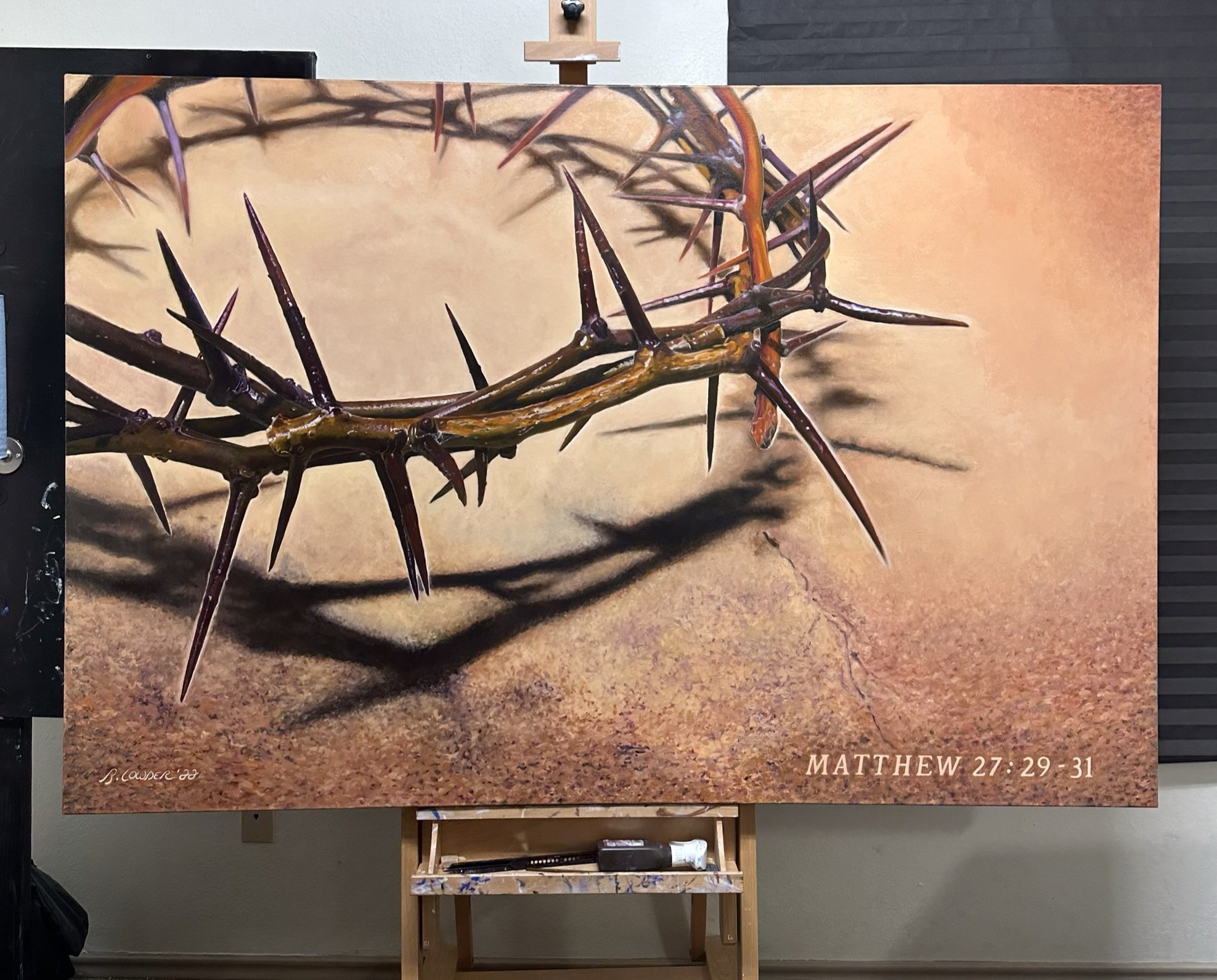
The Process of Creation
I have always thought that a painting has two lives, the one it has on the easel while being created, and the second one that begins when the artist says, “it’s done.”
Steps from Inspiration to the finished Painting
-

Dream it.
It all begins with an idea you want to share with the world. God has given us all the gift of creation when He made us in His true image. Whether that is creating art, launching a business, serving others throughout your community, or maybe you have a creative project to share with the world. Creating quality artwork to Glorify the name of Jesus Christ has been our mission and now with everyday we begin again. To draw out the beauty in the triumphs of the life of Christ, reminders of His love.
-

The Study.
Producing Fine Art is one of the most challenging of all professions. The process of taking the inspired idea and delivering it to the canvas requires the study of your subject and how you will arrange it on the canvas. Starting with a drawing to create the composition and what we call “values” which is the light and dark of the composition and determines the success of the painting. Being the same in our lives, our “values” are what determine it’s quality.
-

The Artist's Palette.
Once we have completed our studies in pencil it’s time to break out the paints. Choosing the blank canvas by the dimensions that fit the composition of the desired finished painting. Beginning with the light and dark values but now using color. Surprising enough most of time the artist spends is not painting but mixing the correct colors on their pallete before applying the paint to the canvas. I choose oil paints, more challenging, but as with many other fine artists the end result can be much richer and pleasing to the eye.
-

Begin by "Staining" the Canvas.
Rather than begin painting on a blank white canvas it is preferred by most who paint in oil to “stain” the canvas before drawing out the image and applying the paints. Painting the background first before adding in the details creating the illusion that brings the flat second dimensional image into that of three dimensions. Basic colors are mixed on the pallete and then applied to the canvas establishing the proper “values”.
-

Adding the Colors.
Once we have covered the canvas beginning to layout the structure and what we refer to as the composition. Composition is not only in values, light and dark, but also the proper application of color. Composition leads the eye of the viewer as it “moves” throughout the image creating a more enjoyable visceral effect. Still not yet adding the details working throughout the entire canvas focusing on the balance of the image.
-

The Finishing Touches.
Now after deciding the right placement of the oils it is time to add in the details which bring the subject to life. Interesting enough paintings can illustrate detail with only a few brushstrokes properly applied. This end result is the most rewarding to the painter and his patrons. I hope you enjoy this description of how I go about it. Always remembering to begin each day in the studio in prayer for guidance of the Holy Spirit and Christ. For me there is no other way.
It’s our sincerest hope that you enjoy our paintings and products and that they bring a reminder of the unfailing love Christ has for each of us. May we never forget.

